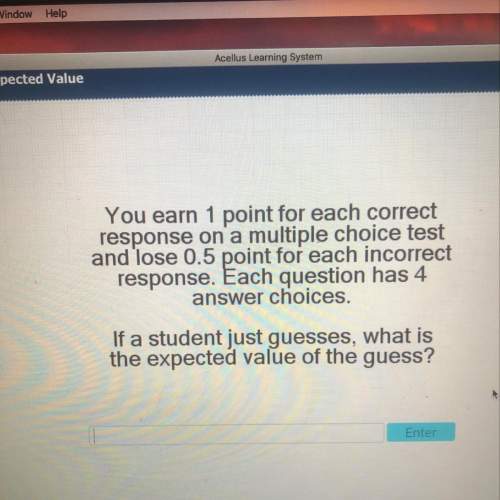
Mathematics, 24.03.2021 15:50 caitlynnstokes
A culture of bacteria has an initial population of 22000 bacteria and doubles every 5 hours. Using the formula P_t = P_0\cdot 2^{\frac{t}{d}}P
t
=P
0
⋅2
d
t
, where P_tP
t
is the population after t hours, P_0P
0
is the initial population, t is the time in hours and d is the doubling time, what is the population of bacteria in the culture after 17 hours, to the nearest whole number?

Answers: 1


Other questions on the subject: Mathematics

Mathematics, 21.06.2019 15:30, gui00g7888888888888
Match each equation with the operation you can use to solve for the variable. subtract 10. divide by 10. divide by 5. subtract 18. multiply by 10. add 18. add 10. multiply by 5. 5 = 10p arrowright p + 10 = 18 arrowright p + 18 = 5 arrowright 5p = 10 arrowright
Answers: 3

Mathematics, 21.06.2019 17:00, emmaline11
Acertain population of bacteria demonstrates exponential growth doubles in size every 4 days. how long will it take the population to triple in size?
Answers: 1

Mathematics, 21.06.2019 20:20, oofoofoof1
Sample response: if the graph passes the horizontaline test, then the function is one to one. functions that are one to one have inverses that a therefore, the inverse is a hinction compare your response to the sample response above. what did you include in your explanation? a reference to the horizontal-line test d a statement that the function is one-to-one the conclusion that the inverse is a function done
Answers: 2

Mathematics, 22.06.2019 00:00, daphnevlogs11
Which diagram shows lines that must be parallel lines cut by transversal?
Answers: 3
You know the right answer?
A culture of bacteria has an initial population of 22000 bacteria and doubles every 5 hours. Using t...
Questions in other subjects:


English, 14.12.2021 03:40



Mathematics, 14.12.2021 03:40

Mathematics, 14.12.2021 03:40




Mathematics, 14.12.2021 03:50




